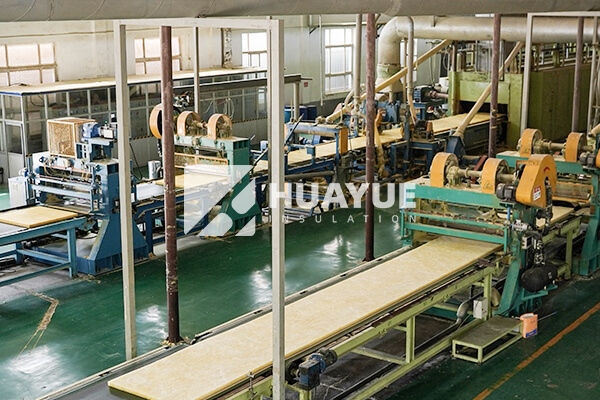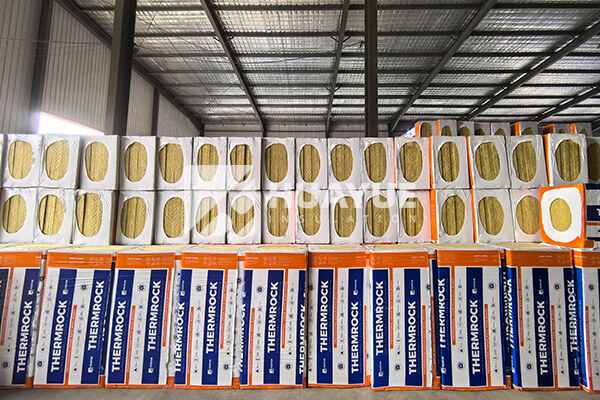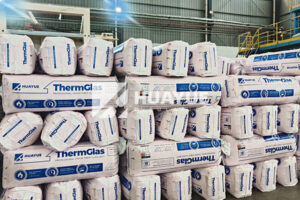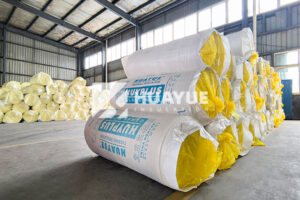Which is better, rockwool or fiberglass batts?
When it comes to insulating a building, many people feel unsure if rockwool or fiberglass batts are the better option. Picking the wrong one can mean higher costs or wasted effort.
Both rockwool and fiberglass batts are popular forms of blanket insulation, known for being flexible, easy to install, and effective at reducing heat loss. The right choice depends on moisture exposure, fire safety needs, noise control, and cost.

Insulation is a big investment. If you choose correctly, you can enjoy long-term savings, safer buildings, and less maintenance. So I’ll walk you through the main points, and show where one insulation has an edge over the other.
What are the main differences between rockwool and fiberglass batts?
If you see batt insulation, you see a fluffy mat tucked between the studs. Both rockwool and fiberglass batts look similar but have different materials and properties.
Rockwool is made from melted basalt rock and slag spun into fibers, while fiberglass is made from sand, limestone, soda ash, and recycled glass. HUAYUE uses up to 30% recycled content in both materials. Both are lightweight and sold in rolls or pre-cut panels.

How do I choose between rockwool and fiberglass for installation and ease of use?
You can install both rockwool and fiberglass with basic tools, sometimes even for DIY projects. But some important differences affect handling and installation effort.
| Feature | HUAYUE Rockwool | HUAYUE Fiberglass |
|---|---|---|
| Material Source | Basalt rock, recycled slag | Sand, recycled glass |
| R-Value (insulation) | Higher per inch | Slightly less per inch |
| Weight | Denser, heavier | Light, fluffy |
| Moisture Resistance | Naturally water repellent | Needs vapor barrier |
| Fire Resistance | Non-combustible (up to 1000°C) | Limited, needs special facing |
| Sound Blocking | Outstanding | Good |
| Installation | Holds shape, friction fit | Staples or wires required |
Rockwool’s density lets you friction fit pieces snugly, unlike the softer fiberglass that may need stapling. Rockwool is less likely to sag over time, especially in high-moisture areas. Both products work great in walls, ceilings, attics, and floors, but fiberglass is easier to cut and work with during small, tight jobs.
Which one resists moisture and fire better?
If you worry about leaks or fire risks, knowing which insulation stands up to water or flames can make your choice clear.
Rockwool has hydrophobic properties that naturally repel water. If water lands on HUAYUE rockwool, it runs right off. This reduces mold risks, and the insulation holds its R-value even if exposed to sudden leaks. Rockwool can withstand temps up to 1000°C (over 1800°F) without melting or emitting smoke.
Fiberglass batts from HUAYUE absorb more moisture and can lose insulation efficiency if they get wet. They must be faced with a vapor barrier to slow down water vapor and limit heat loss. Fiberglass is not naturally fire resistant, but can come with paper or foil facings to provide some protection.
Diving deeper: Understanding durability and health
Whenever I help a facility manager choose insulation, I ask about durability and safety goals. Rockwool works well in harsh or high-risk environments, such as near steam piping, industrial ovens, or chemical tanks. Its rigid, stone-based fibers shrug off high heat and don’t degrade in moisture, so the insulation typically lasts long without replacement.
Fiberglass is softer and may sag or clump over years, especially if it absorbs water. This can create air gaps that let hot or cold air pass by, raising energy costs. If fiberglass is disturbed, tiny fibers can float in the air, causing skin and breathing irritation. Proper handling—including gloves and masks—is recommended, especially for frequent maintenance.
Which has better sound insulation and energy efficiency?
If you want a quiet room or want to lower energy bills, it’s smart to pick insulation that blocks noise and traps air.
Rockwool’s dense fiber web blocks sound waves, making it popular in home theaters, studios, and machinery rooms. It also traps more air per inch, offering higher R-values at the same thickness than fiberglass batts from HUAYUE. That means more protection from outside heat or cold.
Both insulations let buildings save up to 50% on heating and cooling if they’re installed right and left uncompressed. Rockwool, however, stays put longer without settling, so its insulating value holds steady with age. Cut it neatly with a serrated knife or insulation saw to keep the fit tight.
Diving deeper: Measuring efficiency and cost savings
I always measure efficiency using R-value, which rates how well an insulation resists heat flow. HUAYUE rockwool batts usually run between R-4.0 and R-4.2 per inch, while fiberglass batts are around R-3.2 to R-3.8 per inch. Over a whole wall or roof, this can mean hundreds of dollars saved each year in heating or cooling. With rockwool, buildings also stay quieter.
| Quality | HUAYUE Rockwool | HUAYUE Fiberglass |
|---|---|---|
| R-value/inch | 4.0–4.2 | 3.2–3.8 |
| Noise Reduction | Excellent | Good |
| Air Seal | Moderate | Moderate |
Both will lower your energy bill and keep your space quiet. But with rockwool, you get a slight edge in both.
Which costs less and what about professional installation?
Cost is a big factor for large projects. Not all budgets can stretch for the top-tier option.
Fiberglass is more affordable than rockwool, sometimes by half, when you look only at material prices. HUAYUE offers both types in standard rolls for fast delivery. Rockwool, because of its density and mineral ingredients, is priced higher. Installation for both is simple and can be done DIY, but professional help speeds up the process for bigger jobs.

Diving deeper: Weighing price versus performance
I’ve seen many customers do a quick calculation: fiberglass often costs less per square meter, especially when ordered in bulk. For places like attics in mild climates, fiberglass might be best. But when tanks or pipes face moisture, or fire codes are strict, the extra cost for rockwool is worth it. Over the years, the lower maintenance, reduced mold, and better sound protection often pay back the higher upfront investment.
Rockwool needs less replacement and survives more harsh conditions, reducing labor costs down the line for commercial and industrial buildings. For homeowners, if you have a tight budget, HUAYUE fiberglass batts will insulate well and last when kept dry and handled with care.
Conclusion
Rockwool gives more fire, moisture, and sound protection, but fiberglass costs less and also insulates well. For peace of mind in tough environments, invest in rockwool. For cost savings in average conditions, fiberglass works.
You may also be interested in:
Ready to Get Started?
Get in touch with our experts for personalized solutions tailored to your needs.
Get Free QuoteLatest Articles

Glass Wool Fire Rating: How Safe Is Your Insulation?
Dec 25, 2025
Let's Work Together
Ready to take your business to the next level? Get in touch with our team of experts and let's discuss how we can help you achieve your goals.
Get Free Solutions






